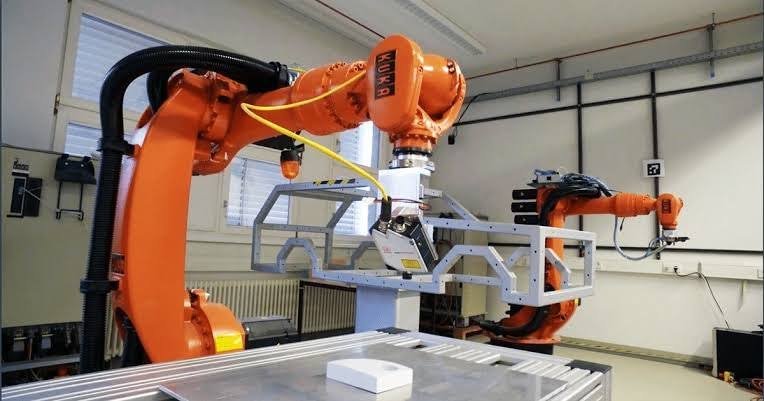
The pendulum squat is a game-changer for anyone serious about building lower body strength, improving muscle definition, and enhancing overall fitness. Unlike the traditional squat, this exercise focuses on controlled movement and deep muscle engagement, making it ideal for both beginners and seasoned gym-goers. In this blog post, we’ll dive deep into everything you need to know about the pendulum squat—from its benefits and proper form to some helpful tips for getting the most out of this exercise.
What is the Pendulum Squat?
The pendulum squat is a unique variation of the squat that uses a specialized machine designed to mimic a pendulum-like motion. The setup allows you to move through a guided range of motion, putting less strain on your back and allowing for deeper squats. This is especially helpful for targeting the quads, glutes, and hamstrings.
Unlike traditional barbell squats, the pendulum squat machine offers more stability, making it a safer option for people who are new to squatting or those recovering from an injury. It’s a great way to isolate lower body muscles without the risk of tipping forward or backward, which can sometimes happen with free weights.
Why Should You Incorporate Pendulum Squats into Your Routine?
Pendulum squats offer several key advantages over traditional squats and other lower-body exercises. Here’s why you might want to add them to your workout plan:
- Targeted Muscle Activation: The pendulum squat is excellent for isolating the quads, glutes, and hamstrings. It emphasizes muscle activation and allows you to focus on proper form, leading to better results over time.
- Low Back Support: One of the biggest challenges with traditional squats is the strain they can put on the lower back, especially when using heavy weights. The pendulum squat machine provides support, reducing pressure on the spine and allowing for a safer range of motion.
- Improves Range of Motion: With the machine’s design, you can achieve a deeper squat than you might be able to with a standard barbell squat. This improved range of motion helps to fully engage the muscles and increase flexibility.
- Beginner-Friendly: Because the pendulum squat machine offers a guided path, it’s easier to maintain proper form, making it a fantastic choice for beginners who may struggle with balance and technique.
How to Perform the Pendulum Squat Correctly
Follow these steps to ensure you’re doing the pendulum squat with the right form:
- Adjust the Machine: Set the pendulum squat machine to fit your body. Make sure the pad sits comfortably on your shoulders and the foot platform is positioned so that your knees are in line with your toes.
- Position Your Feet: Place your feet shoulder-width apart on the foot platform. You can adjust the angle of your feet slightly to find the most comfortable stance.
- Engage Your Core: Tighten your core muscles to support your lower back and maintain stability throughout the movement.
- Lower Slowly: Slowly lower your body by bending at the knees and hips, allowing the pendulum machine to guide you down. Aim to lower until your thighs are parallel to the platform, or even deeper if your flexibility allows.
- Push Through Your Heels: Press through your heels to return to the starting position. Focus on using your quads and glutes to drive the movement upwards.
- Repeat: Perform 8-12 reps for 3-4 sets, depending on your fitness goals. Remember to keep your movements slow and controlled to maximize muscle engagement.
Common Mistakes to Avoid
Even with the assistance of the pendulum squat machine, there are a few mistakes you should avoid to ensure a safe and effective workout:
- Rushing Through Reps: Focus on slow, controlled movements to fully activate your muscles. Speeding through your reps can compromise form and reduce effectiveness.
- Improper Foot Placement: Pay attention to where your feet are positioned on the platform. Your knees should align with your toes to prevent strain on the joints.
- Neglecting Core Engagement: While the machine offers support, it’s crucial to keep your core tight to maintain overall stability throughout the movement.
Pendulum Squat vs. Traditional Squat: Which is Better?
Both the pendulum squat and traditional squat have their place in a balanced fitness routine, but they serve slightly different purposes. Traditional barbell squats offer the advantage of engaging more stabilizing muscles and can help improve overall functional strength. However, the pendulum squat is ideal for isolating lower body muscles and working on depth and range of motion without putting extra stress on the lower back.
If you’re someone who struggles with balance during squats or is looking to safely push your range of motion, the pendulum squat is a great addition to your leg day. On the other hand, if you’re aiming for total body strength and coordination, it’s good to keep traditional squats in your routine as well.
Conclusion: Should You Try the Pendulum Squat?
The pendulum squat is a versatile and highly effective exercise for anyone looking to build lower body strength, improve muscle definition, and achieve a deeper squat. Its focus on muscle isolation and low back support makes it a great choice for beginners and seasoned athletes alike. By incorporating this exercise into your routine, you can enjoy all the benefits of a well-rounded leg workout while minimizing the risk of injury.
Frequently Asked Questions (FAQs)
1. Is the pendulum squat suitable for beginners? Yes, the pendulum squat is ideal for beginners. Its guided motion helps new lifters learn proper squat form without the risk of falling forward or backward.
2. What muscles do pendulum squats target? Pendulum squats primarily target the quads, glutes, and hamstrings, while also engaging the core muscles for stability.
3. Can pendulum squats help with lower back pain? Yes, the pendulum squat machine provides support that reduces strain on the lower back, making it a safer option for those with lower back issues.
4. How many sets and reps should I do? For general strength and muscle growth, aim for 3-4 sets of 8-12 reps. Adjust the weight and reps based on your fitness goals.
5. Are pendulum squats better than leg presses? Pendulum squats and leg presses both target similar muscles, but pendulum squats allow for a greater range of motion and can be more effective for improving squat depth.
6. Do I need a spotter for the pendulum squat? Typically, you don’t need a spotter for the pendulum squat since the machine provides support. However, it’s always a good idea to have a gym buddy nearby if you’re lifting heavy.
By adding the pendulum squat to your workout, you can maximize your leg day and work towards achieving a stronger, more balanced lower body. Give it a try and see the difference it can make!







